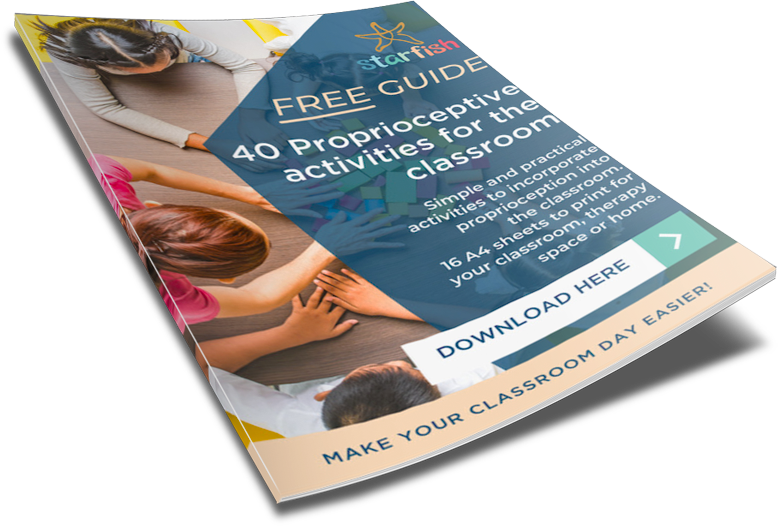Your Cart is Empty
Last chance to enter for the GOLDEN TICKET! Shop with Starfish for your chance at $500 💰


Flashcards are a versatile and effective tool for teaching phonics. They are a simple and engaging way to introduce and reinforce letter sounds and word recognition skills.
By using flashcards, teachers, educators, and parents can help children build a strong foundation in phonics, which is essential for reading and writing success. Additionally, flashcards can be easily adapted to suit different learning styles and abilities, making them an ideal resource for differentiated instruction.
In this blog, we will explore the benefits of using flashcards for phonics learning and provide practical tips for making the most of this valuable teaching tool.

We use flashcards because they help children master crucial phonics knowledge to automaticity, which helps them become proficient readers. And, those who have poor alphabetic and phonics knowledge, tend to have significant difficulties learning to read.
We know that rapid serial naming itself is a POWERFUL predictor of reading ability (Norton, L).
That is, the better you are at rapidly naming symbols (letters, objects, numbers or colours), the better reader you tend to become. Despite the large body of evidence around rapid serial naming (correlating to reading development) we do not specifically “teach” rapid serial naming. This is because, at this time, there is little evidence that doing so has any benefit.
Instead, we use flash cards to teach, practice and master letter and grapheme naming, at speed. They are an important part, albeit a small part, of our tutoring session.
We have flip cards, either alphabet or digraphs (mostly), on a hinged ring.
We use:


We have found the best flash cards:

At the start of every tutoring session, we run through the cards with the child or young person. It takes less than a couple of minutes. Initially we use the illustrated side of the cards, while the child is learning the letter sounds. At the start, we usually join in saying the prompt and sound (eg fat frog fishing f f f) with the child.
We gradually reduce how much we assist, as the child’s skills and knowledge improve. The idea being - only give as much ‘help’ as is needed for their success. We want them doing as much of the “work” on their own, to maximise their independence.
We might say the prompt and they say the sound (eg we say: many mice munching, and they say m m m).
The aim is for all children to be able to name (rapidly) the sounds of all the letters of the alphabet, without any prompts. So, once they have mastered the cards (with the illustration side), we flip the deck over so the child sees only the letter/s and then says the sound.
The same applies for the Starfish Sound Ring level 2 cards.
Note: Sometimes children will start tutoring, and know (to automaticity) MOST of the letter sounds of the alphabet. In which case, we start with the Starfish Sound Ring level 2 cards and add the one or two letters (from the Ants in the Apple pack that they are yet to master).
If you would like to use a similar strategy, you can purchase the Ants in the Apple Cards and the Starfish Level 2 cards with the Starfish Store.
N.b. The Starfish Sound Ring Level 2 cards come already hole punched and with a hinged ring. However, the Ants in the Apple cards do not. You can purchase hinged rings from most stationery stores.
Leave a comment. We would love to hear your thoughts and experiences teaching your children using flash cards and rapid recall techniques. Ask us questions. Let us know if there are specific topics you would like us to cover. We’ll do our best to help and support you. Share this post with your friends and family.
Happy days!
Kirstie Wishart M.Ed
Adams, Marilyn (1994) Beginning to Read: Thinking and Learning about Print
Commonwealth of Australia (2005)National Enquiry into Literacy
NSW Government Education (2017) Effective Reading Instruction in the Early Years of School
Snow, Burns and Griffin (1998) Preventing Reading Difficulties in Young Children
Norton, Elizabeth (2020)What Educators Need to Know about Rapid Automatised Naming
Shanahan, Timothy (2020)How Can I Teach RAN to Improve My Student’s Reading?
Wolf, Maryanne (2008) Proust and the Squid: The story and science of the reading brain
Commonwealth of Australia (2005) National Enquiry into Literacy
Kirstie Wishart M.Ed (Special Education).
Owner and founder of The Starfish Store. Kirstie’s professional life has included: teaching (in both public and private schools in Australia, New Zealand and Thailand), lecturer and subject coordinator at the University of Wollongong, Educational consultant (working with children and young people with a trauma background), OoHC Case Work Manager, and Specialist Tutor (working with children and young people with significant learning difficulties and/or disabilities).

40 Proprioceptive activities for the classroom. Simple and practical activities to incorporate Proprioceptive into the classroom. 16 A4 sheets to print for your classroom, therapy space or home.